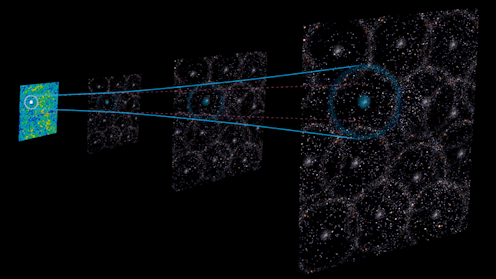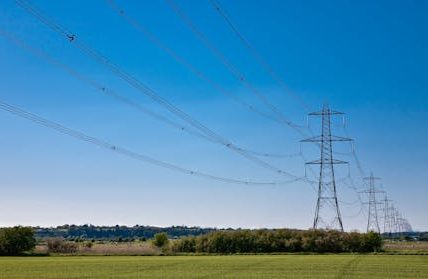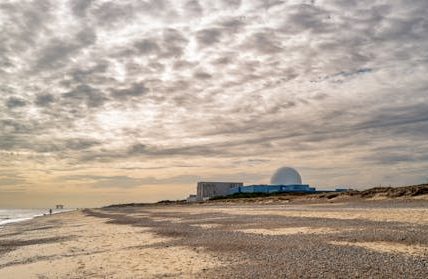Distorted sound of the early universe suggests we are living in a giant void
Baryon acoustic oscillations represent the sound of the Big Bang.
Gabriela Secara, Perimeter Institute, CC BY-SA
Looking up at the night sky, it may seem our cosmic neighbourhood is packed full of planets, stars and galaxies. But scientists have long suggested there may be far fewer galaxies in our cosmic surroundings than expected.
In fact, it appears we live in a giant cosmic void with roughly 20% lower than the average density of matter.
Not every physicist is convinced that this is the case. But our recent paper analysing distorted sounds from the early universe, published in the Monthly Notices of the Royal Astronomical Society, strongly backs up the idea.
Cosmology is currently in a crisis known as the Hubble tension: the local universe appears to be expanding about 10% faster than expected. The predicted rate comes from extrapolating observations of the infant universe forward to the present day using the standard model of cosmology, known as Lambda-Cold Dark Matter (ΛCDM).
We can observe the early universe in great detail through the cosmic microwave background (CMB), relic radiation from the early universe, when it was 1,100 times smaller than it is today. Sound waves in the early universe ultimately created areas of low and high densities, or temperatures.
By studying CMB temperature fluctuations on different scales, we can essentially “listen” to the sound of the early universe, which is especially “noisy” at particular scales.
These fluctuations are now imprinted in the CMB, and dubbed “baryon acoustic oscillations” (BAOs). Since these became the seeds for galaxies and other structures, the patterns are also visible in the distribution of galaxies.
By measuring these patterns, we can learn how galaxies are clustered at different redshifts (distances). A particularly striking pattern, with lots of clustering, occurs at an angle called the “angular BAO scale”.
Illustration showing that slightly more galaxies formed along the ripples of the primordial sound waves (marked blue) than elsewhere. Then the rings of galaxies stretched with the expansion of the universe. Other galaxies are dimmed in this image to make the effect easier to see.
Nasa
This measurement ultimately helps astronomers and cosmologists learn about the universe’s expansion history by providing something physicists call a “standard ruler”. This is essentially an astronomical object or a feature on the sky with a well-known size.
By measuring its angular size on the sky, cosmologists can therefore calculate its distance from Earth using trigonometry. One can also use the redshift to determine how fast the cosmos is expanding. The larger it appears on the sky at a certain redshift, the faster the universe is expanding.
My colleagues and I previously argued that the Hubble tension might be due to our location within a large void. That’s because the sparse amount of matter in the void would be gravitationally attracted to the more dense matter outside it, continuously flowing out of the void.
In previous research, we showed that this flow would make it look like the local universe is expanding about 10% faster than expected. That would solve the Hubble tension.
But we wanted more evidence. And we know a local void would slightly distort the relation between the BAO angular scale and the redshift due to the faster moving matter in the void and its gravitational effect on light from outside.
Read more:
Do we live in a giant void? It could solve the puzzle of the universe’s expansion
So in our new paper, Vasileios Kalaitzidis and I set out to test the predictions of the void model using BAO measurements collected over the last 20 years. We compared our results to models without a void under the same background expansion history.
In the void model, the BAO ruler should look larger on the sky at any given redshift. And this excess should become even larger at low redshift (close distance), in line with the Hubble tension.
The observations confirm this prediction. Our results suggest that a universe with a local void is about one hundred million times more likely than a cosmos without one, when using BAO measurements and assuming the universe expanded according to the standard model of cosmology informed by the CMB.
Our research shows that the ΛCDM model without any local void is in “3.8 sigma tension” with the BAO observations. This means the likelihood of a universe without a void fitting these data is equivalent to a fair coin landing heads 13 times in a row. By contrast, the chance of the BAO data looking the way they do in void models is equivalent to a fair coin landing heads just twice in a row. In short, these models fit the data quite well.
In the future, it will be crucial to obtain more accurate BAO measurements at low redshift, where the BAO standard ruler looks larger on the sky – even more so if we are in a void.
The average expansion rate so far follows directly from the age of the universe, which we can estimate from the ages of old stars in the Milky Way. A local void would not affect the age of the universe, but some proposals do affect it. These and other probes will shed more light on the Hubble crisis in cosmology.
Get your news from actual experts, straight to your inbox. Sign up to our daily newsletter to receive all The Conversation UK’s latest coverage of news and research, from politics and business to the arts and sciences.
Indranil Banik receives funding from the Royal Society as part of a University Research Fellowship managed by his boss Harry Desmond. The second author on the paper was Vasileios Kalaitzidis, who received an undergraduate summer project grant from the Royal Astronomical Society to undertake the analysis described here.



